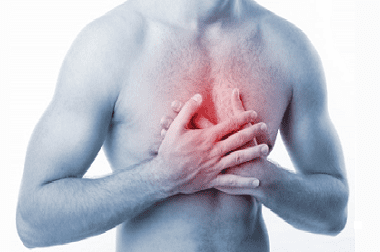Infectious diseases >>>> Human mycobacteriosis
Human mycobacteriosis.

There is a group of atypical mycobacteria, which are called " non-tuberculous mycobacteria", but they are no less terrible pathogens and, accumulating in the human body, lead to serious disorders, and if not properly treated, to death. Atypical mycobacteria are characterized by high resistance (resistance) to disinfectants, to many antibacterial drugs (including broad-spectrum antibiotics) and properties that distinguish them from mycobacterium tuberculosis. Atypical mycobacteria are resistant to acidic and alkaline environments. The biofilm formed by the atypical mycobacterium is able to protect it from antiseptics and disinfectants (including chlorine), which allows bacteria to spread in tap water, in water aerosols present over open and closed water bodies (lakes, ponds, reservoirs, swimming pools, water parks).
Atypical mycobacteria can infect the lymph nodes, causing lymphadenitis. There are a number of diseases of the genitourinary system, joints, skin, bones, membranes of the brain, the causative agents of which are atypical mycobacteria. But most often, the result of the vital activity of this pathogen is a lung disease - mycobacteriosis of the lungs, to which older people are more susceptible.
Mycobacteriosis of the lungs can occur as an independent disease, develop against the background of tuberculosis, or turn out to be the next stage after calmed pulmonary tuberculosis.
It has been observed that mycobacteria tend to develop in conditions of a weakened organism with a weak resistance of the immune system; in people suffering from chronic diseases or working in a dusty atmosphere and suffering from pneumoconiosis or other diseases of the respiratory tract and lungs (for example, mycosis of the lungs), which increase the sensitivity of the lung tissue to various kinds of infections. Many types of atypical mycobacterium that infect birds and animals are dangerous to humans, which makes contact with sick birds or animals a risk factor. The cause of mycobacteriosis can be a raw food diet and improper heat treatment of food of animal origin.
Signs of mycobacteriosis of the lungs:
- It can proceed under the mask of bronchitis,
- General weakness, sweating,
- Dry cough without phlegm or with little sputum production,
- Possible chest pain,
- Available subfebrile temperature (about 37 in Celsius),
- Weight loss signs.
Diagnosis of mycobacteriosis is based on a bacterial study of sputum, bronchial lavage water, urine analysis and the contents of ulcerative skin lesions (in the case of skin mycobacteriosis). Multiple isolation of atypical mycobacterium is considered a reliable fact of the presence of mycobacteriosis, but when identifying the pathogen, it may turn out that different types of atypical mycobacteria are sown, which presents certain difficulties in diagnosing the disease.
X-ray examination of the lungs reveals infiltrates, sometimes areas of fibrous tissue.
Treatment of mycobacteriosis includes determining the sensitivity of the isolated strain of atypical mycobacterium to a number of antibacterial agents; for this, an antibioticogram is created, which the doctor is guided by when prescribing antibacterial drugs. In the course of various studies, it was found that atypical mycobacteria (most of them) are resistant to many anti-tuberculosis drugs, are resistant to streptomycin, isiniazide, PASK. Some strains are sensitive to rifampicin, cephalosporins, cycloserine, fluoroquinols, ethionamide. In cases of weakened immunity, immunostimulating therapy is used .
Treatment of atypical mycobacteriosis is long-term, and conservative treatment is not always effective. For this reason, surgical methods of treating mycobacteriosis are also used - excision of the affected areas of tissue.
The prognosis in the treatment of mycobacteriosis is successful in cases of early detection of infection and correctly selected treatment. During the period of treatment, for its successful implementation, it is necessary to change the way of life: to exclude smoking, change the harmful dusty working conditions or living in a polluted environment to a more favorable environment. Do not weaken the body with unnecessary physical exertion, do not freeze, do not overheat and avoid stress.

Read

Read



























